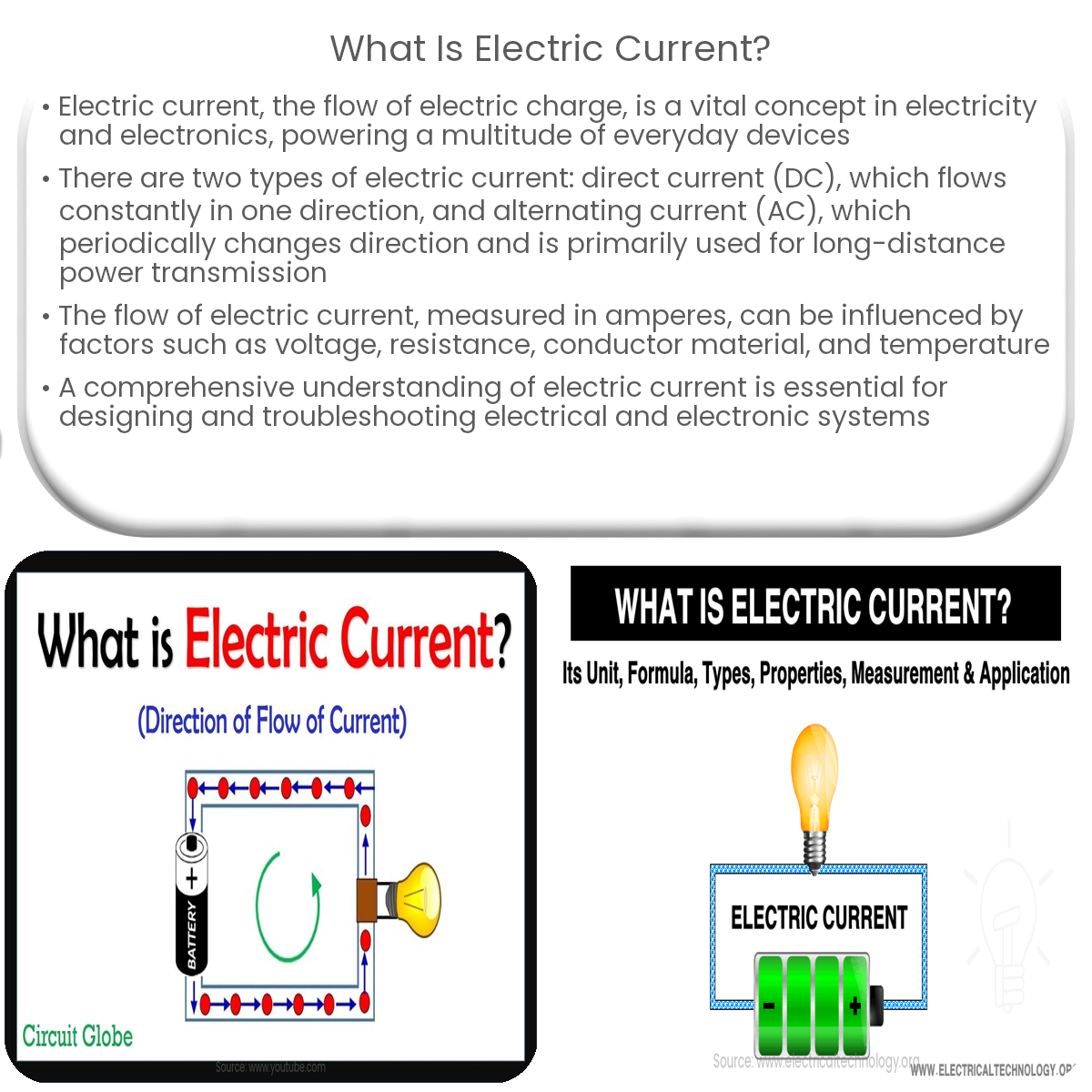Electric current is the flow of electric charge, typically carried by electrons, through a conductor like a wire, powering devices and transferring energy.
Understanding Electric Current
Electric current is the flow of electric charge, usually carried by electrons in a conductor like a metal wire. It is a fundamental concept in the study of electricity and electronics, as it enables the transfer of energy and powers our everyday devices.
Types of Electric Current
There are two types of electric current: direct current (DC) and alternating current (AC).
- Direct Current (DC): In DC, the electric charge flows in a single, constant direction. It is commonly produced by batteries and is used in electronic devices like smartphones, computers, and LED lights.
- Alternating Current (AC): In AC, the electric charge changes direction periodically. The most common source of AC is the power grid that supplies electricity to our homes and businesses. AC is preferred for power transmission over long distances due to its ability to be easily transformed to different voltage levels.
Measuring Electric Current
Electric current is measured in amperes (A), often abbreviated as ‘amps.’ One ampere is defined as the flow of one coulomb of charge per second. The symbol ‘I’ is typically used to represent current in mathematical equations, such as Ohm’s Law: I = V/R, where ‘V’ represents voltage and ‘R’ represents resistance.
Factors Affecting Electric Current
Several factors can influence the flow of electric current in a conductor, including:
- Voltage: A higher voltage leads to a greater flow of electric current, as it provides a larger force to push the charges through the conductor.
- Resistance: The opposition to the flow of electric current is called resistance. Conductors with higher resistance require more force (voltage) to maintain the same current flow.
- Conductor Material: Different materials offer varying levels of resistance to electric current. For example, copper and aluminum are good conductors, while materials like rubber and plastic are insulators.
- Temperature: As the temperature of a conductor increases, its resistance typically increases, causing a decrease in current flow. This effect is more pronounced in some materials than others.
Importance of Electric Current
Electric current is essential for modern life, powering everything from household appliances to industrial machinery. Understanding electric current and its principles is crucial for designing and troubleshooting electrical and electronic systems.


